#and because there's less ability to communicate between steps of the process
Explore tagged Tumblr posts
Text
Northnode in natal chart ✨

🩵 FOR ENTERTAINMENT PURPOSES ONLY, ENJOY 🩵
~~~~~~~~~~~~~🫧🫧~~~~~~~~~~~~~
🩵 MASTERLIST
~~~~~~~~~~~~~🫧🫧~~~~~~~~~~~~~
🫧 Northnode in 1st H/ Aries
-This placement often indicates that you will have to work through significant personal fears and doubts about your own identity. Early in life, you might feel a strong sense of insecurity or even self-doubt when it comes to expressing yourself. You may find yourself hesitating to take the lead or assert your own opinions because you fear rejection or standing out. Interestingly, people with the North Node in the 1st House often have a strong pull toward blending in or seeking validation from others (perhaps from relationships or groups). So, the struggle here is that even if your soul’s path calls for independence, there can be an intense inner conflict where you feel torn between wanting to please others or simply follow the crowd, and the urge to step into your own light, which can feel scary. The key to this placement is not just “be yourself” in a surface-level way, but rather to understand your true self at a soul level, and be brave enough to fully embody that identity. For many, this process involves a long-term journey of shedding old layers of self-doubt, fears of standing out, and dependency on others approval. This isn’t always an easy or immediate process, but once you start stepping into your own individuality and authority, you’ll begin to feel like you’re finally on the right track.You might also face circumstances in life that push you toward self-assertion, sometimes in challenging ways,like being put in positions where you’re forced to take the lead, make decisions for yourself, or stand alone. While these situations can feel uncomfortable, they are exactly what you need to develop that inner strength and leadership ability. Ultimately, your life’s path isn’t just about becoming independent; it’s about developing a deep sense of personal authority and trust in your own inner wisdom. The transformation here is about owning your individuality and making decisions that reflect who you truly are, even if it means stepping away from relationships or situations that once defined you. Over time, as you embrace this journey, you’ll come to realize that being true to yourself and acting from that place is the most fulfilling way to live.
🫧 Northnode in 2nd H/ Taurus -
- North Node in the 2nd suggests that you might be learning to trust your inner voice and instincts more. You’re meant to trust yourself to make decisions about what’s important to you and what you value. It can take time, but once you start trusting your own choices, life will feel more aligned.you may have a tendency to rely on others for your security (emotionally or financially). With your North Node in the 2nd house, you're being called to become more independent. This might mean learning how to create your own wealth, be self-sufficient emotionally, or even building your own sense of confidence.Sometimes, with a North Node in the 2nd, there's a tug between focusing on material things and feeling guilty about it. You might feel the pull to be "spiritual" or above material concerns. However, the 2nd house teaches that material wealth isn't bad, it’s how you use it and how it connects to your values that matters. You may need to find a balance between material security and your higher goals.You might be drawn toward developing skills or hobbies that have a tangible, practical outcome, like making things with your hands or developing a specific craft. With North Node here, it can feel very fulfilling to build something of value, whether it’s a physical object or something that brings you long-term security.
🫧 Northnode in 3H / Gemini
-With the North Node in the 3rd, you’re being called to move away from abstract thinking and to focus more on practical, grounded communication. It’s about being less "head in the clouds" and more about connecting with the people around you in real, tangible ways.This placement asks you to embrace a mindset of curiosity and adaptability. If you've been too fixed in your ideas or overly rigid in your thinking, the North Node in the 3rd will push you to become more flexible and open-minded. You’ll be drawn toward exploring different perspectives and ways of thinking, often discovering that learning from others can be just as valuable as your own knowledge.3rd house also governs technology and communication tools, like social media, websites, and anything related to connecting ideas over distance. This could be an area where you learn to express yourself in new ways or use technology to enhance your ability to share ideas and connect with others. Another aspect of the North Node in the 3rd house is learning how to be a bridge between different groups of people or ideas. You might find yourself in situations where you need to help others understand each other,whether it's reconciling different viewpoints, simplifying complex concepts, or helping people communicate better.
🫧 Northnode in 4H/ cancer :
-The North Node in the 4th house is asking you to move away from the hustle and bustle of the outer world and turn your attention inward. You're being guided to prioritize your private life, emotional well-being, and family over external achievements or public recognition.One of the deeper lessons of the 4th house North Node is working through family karma or emotional baggage. You might feel called to break free from unhealthy family patterns or healing past wounds that have affected your sense of security. This may involve revisiting your childhood or understanding the way your upbringing shaped your current emotional needs.You might feel a deep need to create a place where you can feel truly at home,this could involve building a physical space that feels like your sanctuary or learning to emotionally anchor yourself. Your home life may be an essential source of fulfillment, and you may find that stability in your home environment helps you thrive.You may feel more comfortable in private settings or have a natural inclination to retreat to your home when you're feeling overwhelmed. This could lead you to find deep emotional fulfillment in cultivating a safe, nurturing home environment.

🫧 Northnode in 5H/ leo:
-you might have spent previous lifetimes (or earlier parts of your life) focusing on abstract thinking, group goals, or even detaching emotionally. With the North Node in the 5th house, you're being asked to move away from these more distant, impersonal energies and embrace a more passionate, personal connection to life. You're meant to learn how to live from the heart and pursue what excites and inspires you.People with the North Node in the 5th house often feel the pressure to focus on work or obligations. However, you are being called to create balance by nurturing your creative side and allowing yourself time for fun, adventure, and recreation. This placement teaches that it’s important to play and relax, not just work and achieve. Learning to relax and enjoy the process, not just the outcome, is a key lesson.The 5th house is also linked to taking risks and embracing the unknown. With the North Node here, you might be called to step out of your comfort zone and take creative or personal risks. This can be scary, but it's a crucial part of your growth. You’re meant to learn how to be more open to trying new things, taking chances, and showing your authentic self without fear of failure or judgment.In many cases, those with this placement may feel restricted by expectations or the norms of society. The North Node in the 5th urges you to embrace what makes you truly unique, even if it goes against what others expect or think is “normal.” It’s about being true to who you are and expressing that with pride.
🫧 Northnode in 6 H/ Virgo:
-With the North Node in the 6th house, you're being guided to move away from lofty, abstract concepts and instead focus on practical, tangible tasks. Your soul’s growth comes from getting grounded in the here and now, focusing on small but meaningful contributions to your daily life.The 6th house is tied to health, so you may also find that helping others is healing for you. Whether it's through your work or everyday acts of kindness, serving others in a practical way may lead to personal healing. There may also be a connection between your physical health and your emotional state, meaning that when you focus on helping others and creating structure in your life, your own well-being improves.With the North Node in the 6th house, you may be called to pay attention to the details of life. This could mean getting better at organizing, planning, and fine-tuning the small aspects of your routine or job. However, it's important to find a balance and avoid falling into perfectionism.you’re meant to develop a humble, practical approach to life and find satisfaction in the simple, everyday tasks. This could mean embracing tasks that others might overlook but that are essential to creating a well-functioning environment.
🫧 Northnode in 7H/ Libra :
-North Node in the 7th house urges you to move away from excessive self-focus and towards focusing on others. Your soul’s evolution comes from learning to relate to the world through relationships and partnerships, not just from your own individual perspective.One of the deeper lessons of the North Node in the 7th house is learning how to be a true partner. This doesn’t just mean being in a relationship, but actively being a supportive, equal partner who respects the needs and desires of the other person. You may find yourself attracted to people who mirror your own relationship struggles or serve as teachers in how to develop stronger bonds. You might attract significant people into your life who will help you grow or challenge you to learn the lessons of cooperation, balance, and partnership. These individuals may play crucial roles in your development, and you’ll likely experience significant relationship dynamics throughout your life that guide your personal growth.A key lesson is learning to shift your focus from "me" to "we." This means moving away from an overly independent mindset and embracing a cooperative, team-oriented approach to life. The North Node in the 7th house emphasizes the importance of collaboration, negotiation, and creating a shared vision with others, whether in love, work, or friendship.
🫧 Northnode in 8H/ scorpio:
-The 8th house governs the occult, hidden knowledge, and mysteries. Having the North Node here suggests you may be drawn to explore subjects like psychology, metaphysics, astrology, or anything that delves into life’s mysteries. You are meant to develop a deeper understanding of the unseen forces at work in your life and in the world. Your growth comes from embracing and exploring the unknown rather than shying away from it.The North Node in the 8th house asks you to move beyond the material world and focus on inner transformation, emotional depth, and the intangible aspects of life. You may need to let go of a need for control over material things and trust in the process of transformation.you may need to face your fears head-on, particularly fears related to loss, death, vulnerability, or intimacy. This is a path of confronting your own psychological “shadow”,the parts of yourself you may not fully understand or accept. The more you embrace your shadow, the more you transform and grow.There is often a lesson related to power and control when the North Node is in the 8th house. You may need to learn how to navigate power dynamics in relationships, whether it’s about controlling your own power, being manipulated by others, or learning how to empower those around you. Understanding how power works on both a personal and collective level is a key part of your soul’s journey.

🫧 Northnode in 9H/ Sagittarius
-you may have spent previous lifetimes or earlier parts of your life focusing on familiar, practical knowledge or staying within a small, familiar circle. The North Node in the 9th house asks you to move beyond these limits and seek broader, more expansive knowledge. It’s time to move away from focusing on just the immediate and local world and embrace the big picture.One of the key lessons of the 9th house is about finding freedom in your beliefs and worldview. You might be encouraged to break free from inherited beliefs, whether cultural, religious, or familial, and explore what resonates with you personally. This could lead you to adopt an entirely new belief system or philosophy that reflects your evolving sense of self.While the North Node in the 9th house calls you to seek knowledge, it also points to the importance of sharing what you’ve learned. As you grow and expand your understanding, you might feel called to teach others or guide them on their own journeys of discovery. This could involve teaching formally, writing, or simply sharing your wisdom through life experiences.Traveling may be a key aspect of your life, broadening your worldview and expanding your understanding of different cultures and people.
🫧 Northnode in 10H/ Capricorn
-with your South Node is in the 4th house, you may have spent previous lifetimes or earlier parts of this life focusing too much on your home, family, and personal comfort. While these things are important, the North Node in the 10th house encourages you to move toward the public realm, professional growth, and outward achievement. It’s time to shift from a focus on internal, family matters and develop a strong presence in the world.The North Node in the 10th house can bring a sense of destiny tied to your career. You may feel driven by a desire to achieve something significant and leave a mark on the world. There is often a sense of "rising to the top" in some capacity, but this is not about superficial fame. It’s about aligning with your true purpose and contributing meaningfully to society in a way that fulfills your highest potential.People with the North Node in the 10th house are often called to be more visible in the world. This could mean stepping into the spotlight, leading a team, or being recognized for your work or achievements. It's about learning how to be comfortable with recognition and building a professional reputation that reflects your true abilities and contributions. You’re meant to grow into someone others look up to for guidance and wisdom. Developing leadership skills and becoming more confident in your authority will be key to your growth.
🫧 Northnode in 11 H / Aquarius
-The North Node in the 11th house encourages you to step away from the more self-centered, individualistic aspects of the 5th house(South node in 5th) and toward working with others for a common cause. It’s about shifting from focusing solely on personal desires to contributing to larger collective goals.Your growth comes from building friendships that align with your values and ideals. You are meant to surround yourself with people who inspire you, challenge you, and push you toward your bigger goals. While it’s important to have fun and connect on a personal level, your soul's purpose thrives when you focus on relationships that have a deeper, more purposeful connection based on shared ideals or a common mission.The 11th house is linked to innovation, science, and technology. You may feel drawn to explore new technologies, trends, or ways of connecting with others, particularly through modern methods such as social media or virtual communities. Embracing new ways of connecting or working with others on a larger scale,especially through technology can be a significant part of your soul’s journey.You may feel drawn to participate in or lead social causes, organizations, or movements that work for the betterment of society. Whether through activism, charity, or working in a community-focused job, you’re meant to contribute to the collective good. Working toward a better future for all is an essential part of your purpose.
🫧 Northnode in 12H/ Pisces
- with your South Node is in the 6th house, you may have spent past lifetimes or earlier parts of your life focused on practicality, daily routines, and material success. The North Node in the 12th house encourages you to move away from these outward, day-to-day concerns and toward more internal, spiritual work. It’s about finding peace within yourself rather than constantly trying to improve the material aspects of life.The 12th house is about retreating from the noise of the world. You may need to spend time alone or in quiet environments to connect with your deeper self. This doesn’t mean being isolated or lonely, but rather allowing yourself to recharge and access the subconscious mind. Regular solitude or spiritual practices such as meditation or journaling can help you unlock the wisdom of the 12th house.The 12th house is often associated with the unconscious mind and, in some ways, past lives. People with the North Node in the 12th house might feel a sense of nostalgia or a deep connection to things that are hidden or not immediately understandable. You may also experience vivid dreams or flashes of intuition that guide you toward healing or deeper understanding.You might be called to contribute to the world in a way that is not self-serving or for recognition. This could involve working in a charitable capacity, taking on a spiritual role, or simply helping people who are suffering. Your purpose is about offering compassion and kindness without the expectation of reward or recognition.

Hope you enjoyed ✨
- PIKO ❤️
#astro community#astrology#astro observations#astro notes#astro placements#synastry aspects#composite chart#synastry#synastry observations#composite#love astrology#astrology chart#vedic astrology#astroloji#astrology community#astrology content#astrocafecoffee#astro chart#astro content#vedic astro observations#vedic astro notes#vedic chart#astrology birth chart#birth chart#astrology blogs#astrology blog#astrology basics#astrology beauty#astro blog#natal chart
879 notes
·
View notes
Note
Can you help me to understand why Sakura is so nervous here to ask for his favourite food? Does this has root in his childhood?

Yeah! I can give my insight on it at least! So this scene happens immediately after Sakura's talk with Kaji and Umemiya. During which, they drove home that everyone at Furin doesn't conditionally love Sakura because of his fighting ability or that they think he's going to be this strong, unshakeable captain. They love Sakura because of *who* he is. Which is a very hard thing for Sakura to understand because he doesn't feel like he knows himself very well. Up until this point he really did think the only thing about himself that was of value was his physical strength/fighting ability. (We're going to get this scene next week too btw ;;v;; I'm going to sob at this coming episode I swear)
It's not specifically about asking for Omurice that is making Sakura so nervous I don't think, but what happened in the scene leading up to him saying what food he wants. Sakura made this big apology/announcement to class 1-1 that he's sorry that he is a failure of a captain and he is probably going to screw up in the future trying to lead and protect them. He calls himself weak again, and says he's just going to be a disappointment to them. In response to which, his classmates affectionately/angrily attack him and everyone expresses in their own ways that they're insulted Sakura would think their care for him is so conditional.

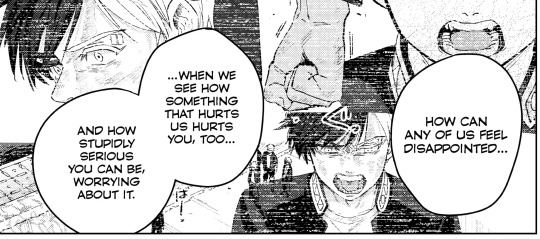
Insulted that Sakura assumes they expect Sakura to be this perfect leader and that they don't already know that he's just starting out learning how to look out for others and be a good leader. Yes, just as Kaji told him already, they KNOW he doesn't know what he's doing. They KNOW he's going to make dumb mistakes and "Be a lameass" (Anzai ily, you're so fucking funny). They KNOW he's navigating unknown territory and he's scared. But all the same, does Sakura really think they're the kind of people who would just reject him immediately after a single mistake? Does he think they don't love him for how hard he's TRYING to do good, for how hard he wants to fight for them and to protect the same things that are important to them as well? That they would think less of him because he freaked out when he saw them getting hurt, and then was beating himself so much over the fact that he "let them" get hurt???
Well, clearly that means he doesn't understand them at all, and that needs to be amended immediately. So how do people in Wind Breaker go about connecting to each other, and solidifying their status as a family/community? THEY GO OUT AND GET A MEAL TOGETHER!!! (to bring it back to my food is community theme post on my WBK blog~)

(Again, Anzai Ily so so much gjsdkflg) But yeah! Basically they all start arguing about where to eat after school when they ask Sakura to be the person to decide for them. He's nervous partially because he's still processing everything that they've been saying to him this scene, but also because expressing what HE wants (to eat) and HIS preferences is the first step of putting himself out there for them. It's not a fact about him that's related to his strength or fighting ability or ability to lead, it's just what his favorite food is. And that, in a way, is a first step towards letting them get to know who he really is. As Suo had just said-

(Which, Also, YEAH OKAY *SUO*, how about taking some of your own advice and opening up to the class about yourself too??? He literally tries to bullshit his answers to their classmates when asked at Pothos what he's scared of most and Nirei has to call Suo's ass out.) But anyways! Yeah, the tension of the scene is finally released because Class 1-1 is more than happy to agree to go to Pothos for Omurice/fried onigiri etc and Sakura had had to build up a LOT of courage to talk to them so honestly and vulnerably. They're moving on as if nothing has changed between them BECAUSE nothing has changed and they now just know that they have to take a little more direct of an approach to assure Sakura that he is allowed to make mistakes and be himself and they will never reject him or even think less of him for it.
#Wind Breaker#FryTalks#Sakura Haruka#It all comes back to Food and Community I'm telling you lmaooo#Which is why as a little bitch for Found Family Wind Breaker is just. UGGH! IT IS SO my jam ;;v;;#Every chapter has me either giggling or tearing up I swear#I will reblog this to my wbk blog but it was sent here as an ask so it has to be posted here first! Which! I *think* asks are open there!#Feel free to send me ANYTHING wbk related. Even if you just want someone to talk to about it! I fucking love yapping about Wind Breaker#anzai masaki#tagging him too since he takes the lead in calling Sakura an idiot (affectionately/aggressively lmaoo)
63 notes
·
View notes
Text
Starlo's personality (in-depth)
Okay, this one took a LOT of thinking to decide on. Mainly because we see Starlo 100% in his persona for the majority of the time we spend with him. But now, I think I've had my boy figured out.
For a while now, I thought that he's either an ENTP or an ESTP with well-developed Fe, but eventually realized I had been looking at the image he put on, not the real him.
But before dwelling deeper into what his way of thinking actually is, I'd like to discuss why I don't think he's either ENTP or ESTP.
For ESTP, it's more obvious. Starlo… doesn't use Se at all, let alone as his dominant function. He lives in fantasy. He can come up with goofy ideas, and doesn't pay much attention to the "real world" (tries to escape from the real world instead)
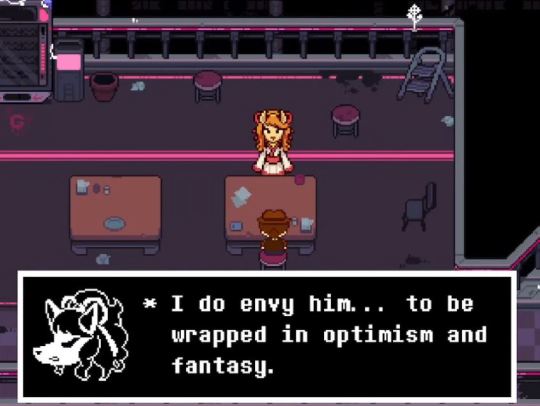
fantasy, not reality (Ceroba is a true realist though)
Starlo only pretends to be this 'tough guy,' his recklessness (I always call it carelessness) is part of the persona. And while I do think some part of him enjoys the fake adventures, it's mostly for show, to lift himself and others around him up, particularly Ceroba, and to feel like someone else.
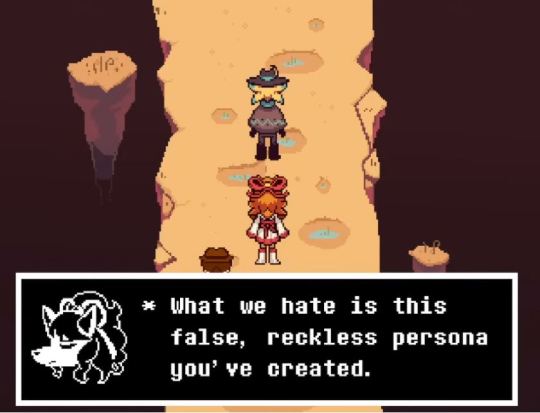
Now... the conclusion I came to was that Star had both Ne and Fe somewhere. The only question I had to ask myself was the order of these functions. In other words, is he dominant Ne/tertiary Fe or dominant Fe/tertiary Ne
The most important question here is: "What is his main motivation?"
Starlo cares a whole bunch about everyone around him. I feel like I've spoken about this so many times already, but he really is the 'papa bear' of the whole group. He makes sure to remind Mooch how they're not bandits, he gave the Four their own nap time, he organizes events, and overall tries to make the Wild East a comfortable place for everyone. Starlo really, REALLY wants to see everyone get along well with each other, and when that doesn't happen... he's deeply bothered by it.
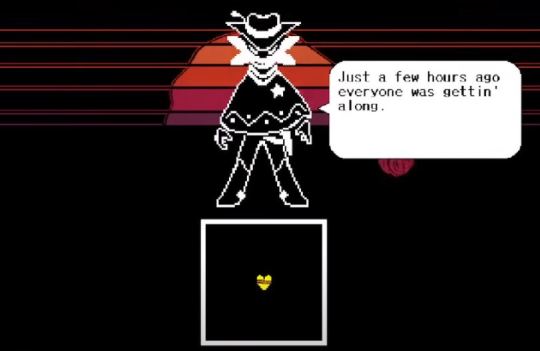

he hates it when there's no harmony and good vibes
Put bluntly, Starlo wants to contribute to his community. He most definitely thought something like this: "If I'm just a farmer, then I can't do anything to help myself feel less worthless, and I can't help other monsters have more hope, either. So, the only thing left for me to do is change most of my personality and be more 'flashy' and 'cool."
Sure, he comes up with creative ideas, but it isn't his main motivation or how he normally acts when he's not 'North Star'. Being all 'extravagent' is the dominant trait of the character Starlo plays (and personally, I think it is a part of Starlo himself, the part he's too afraid to let out if he's his true nerdy self, without the costume and badge and all)
--------------------
ESFJ: thinks in terms of group dynamics, motivates others to get things done, makes decisions that benefit the largest number of people, natural ability to process and deal with their feelings. On the negative side, they can place so much emphasis on social dynamics / emotions that they find it hard to step back and analyze their motives and feelings; thus they can lack self-understanding and/or pressure others into social norms. They use their Ne to brainstorm and for humor purposes; often to entertain others, to think up solutions, and to hypothesize, but their natural ability is not competently and accurately reading between the lines.
--------------------
I'd like to break this down carefully because, holy hell, this is Starlo from A to Z
thinks in terms of group dynamics/makes decisions that benefit the largest number of people - clear as day, that's why he has his posse (although I think this trait of his was underdeveloped during the events of UTY as Star probably made most of the decisions himself without asking the others)
motivates others to get things done
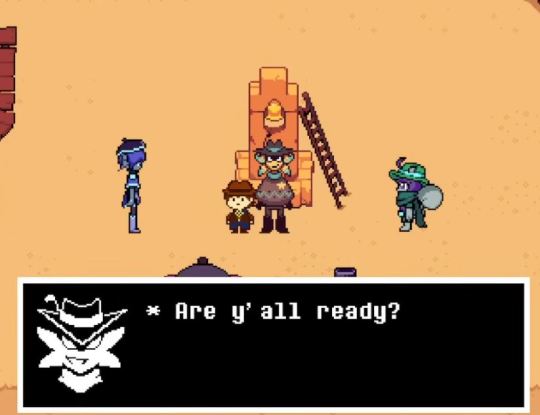

pressure others into social norms - technically his own social norms, also the dress conditions he never used to overlook (I also heard ESFJs have style and care about how they appear to others, ENTPs don't; but maybe this is generalization)


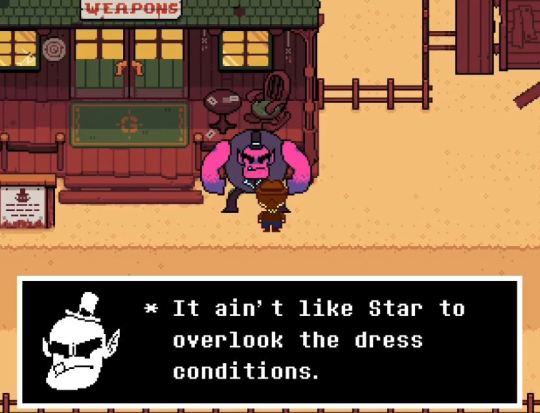
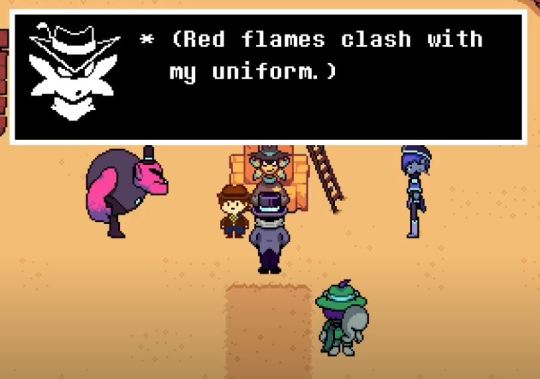
find it hard to step back and analyze their motives and feelings - Star turns to the outside world instead, not inwards at all. That's what makes him an extrovert, NOT because he's friendly and social (although he is)
They use their Ne to brainstorm and for humor purposes; often to entertain others - when I read ENTERTAIN OTHERS it all became clear to me
their natural ability is not competently and accurately reading between the lines - he can't even do it and has to directly ask ⬇️
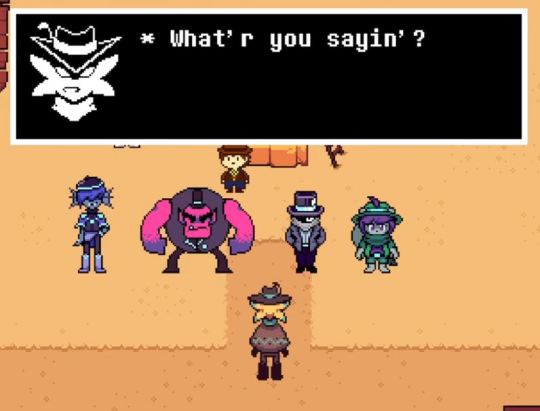
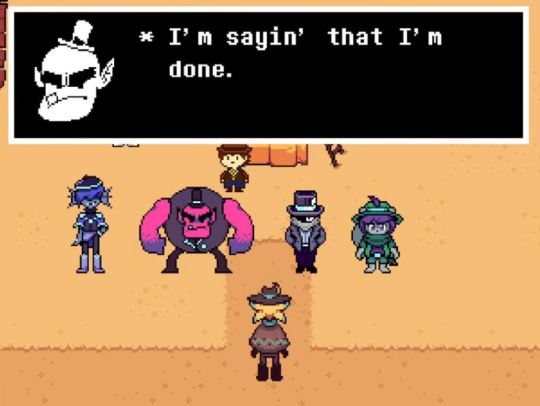
Extra thoughts
What I've also heard about the ESFJ type is that they really REALLY care about their social status/standing when unhealthy, which Star 120% did
It might seem weird that he's a sensor while also being super creative and into ideas, but that's his high tertiary Ne speaking (no wonder it's so high when he's been using it for years)
ESFJs are super charming too, but in a less 'agressive' way like ESTPs (I thought about Dina and Mo, I think they both share this type), or 'witty' way like ENTPs (Sans comes to mind). In others words, Starlo is the 'sweet nerd' kind of charming
ESFJs are bad at dealing with criticism

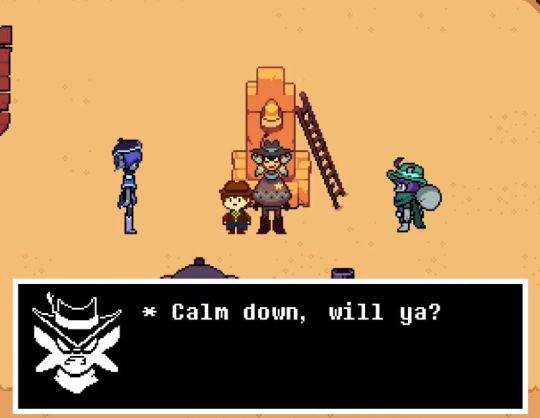

Can become workaholics (ESTPs and ENTPs are more procastinators; again, I don't mean to generalize)
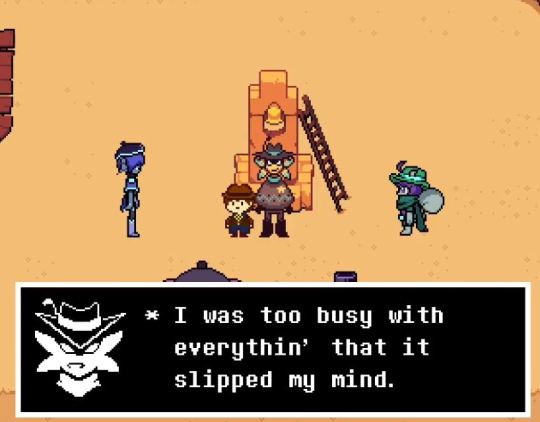
They're clumsy, too (because of the tertiary Ne; unlike ESTPs, who are grounded in reality and most often aren't clumsy thanks to the dominant Se)
Popular people in leadership positions
Excellent planners (I know Star seems like a percieving type, but as I mentioned above, he actually organizes EVERYTHING)

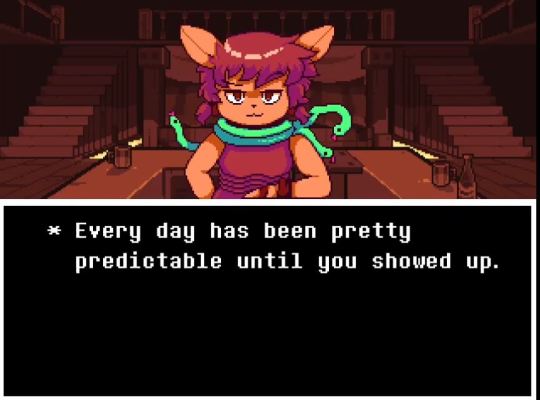
this makes me think Star has a certain routine (judging over percieving)
He remembers little details about things that happened last month (in the past), making me think of his auxiliary Si (and he also remembers what Ed had said about Clover "being the problem")

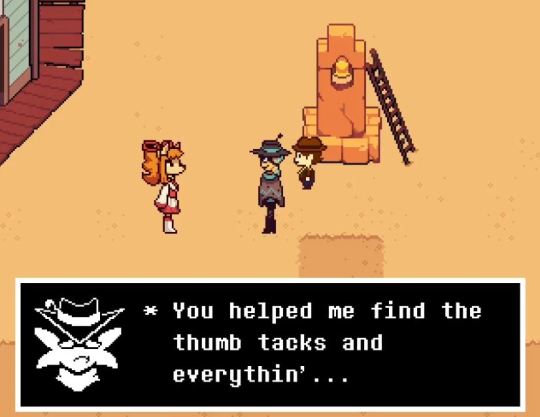
So, what makes Starlo inferior Ti? The guy refuses to go inwards to solve his problems. He doesn't think that the most logical solution to the 'whole gang splitting up' situation is a simple apology, and is extremely self critical. Ti has the potential to disrupt or shatter one’s ego-image. Therefore, unhealthy or immature Fe-doms do their utmost to reject Ti in order to protect their ego-image. What this means for Starlo is that he wants to protect his persona in favor of what makes sense for him to do.

Starlo putting himself down™
Fe will use Ti to construct “rational” explanations to confirm poor judgments about people or relationships. In other words, Fe will develop a maladaptive tendency to misinterpret people’s intentions, see ulterior motives that do not exist, or project their own personal issues onto others. Starlo "logically" thinks that everything was Clover's fault, he's projecting his own insecurities into this situation (playing the victim) and twisting Ed's words (who meant to say that Starlo's favorism OF Clover is the problem, not Clover themself)
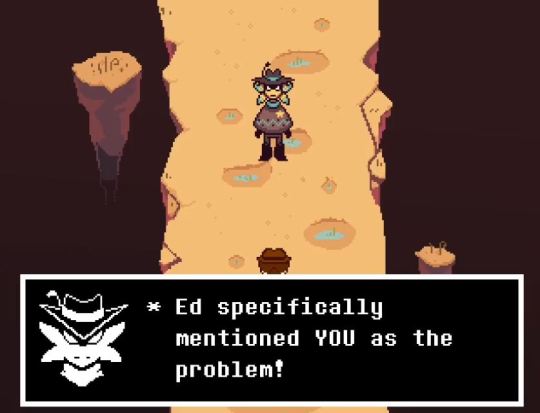

Not objective, but Starlo and Clover LOOK to me like the types I gave them (based on the offical trailers AND how Martlet describes them, that kid has this kind of a cute/warm/naive expression, I don't even know how to explain this but I'm throwing it in anyway 😅)


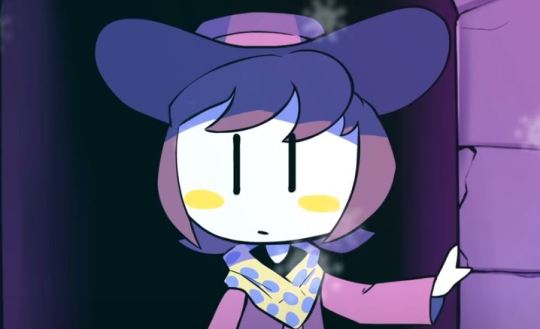


Then there's Starlo

I know the 'North Star' part of him probably wouldn't wanna hear this, but without the persona, Starlo looks and is... pretty normal. No flashiness, no overwhelming charm (it's still there, just more 'humble' & as Ed said, he can make his own fun in the little things). As much as Star might think otherwise thanks to those insecurities, this doesn't mean he ain't special, we all know he is
P.S. I can totally picture him treating everyone with Feisty Sliders & root beer after a long day, just like this guy (who somehow gives me the same cozy, kind vibe as Starlo???)

but in all seriousness though, these traits fit Star 💯
#I love this nerd so much I want to squeeze him and kiss him on the cheek#huge sweetheart alert#uty#undertale yellow#starlo uty#uty starlo#starlo#north star#uty clover#clover uty#uty feisty five#character analysis#long post#it also makes sense for his character that Star's not a “cool” mbti but a more underrated one
49 notes
·
View notes
Note
Thoughts on Van having adhd?
ADHD!Van headcanons
This is another Van headcanon that I absolutely adore, so buckle in and thank you for asking!
In my dyslexic!Van post, I talked a little about her flying under the radar with her struggles in school and I think a big part of why that happened is because of her ADHD. She got categorized by her teachers super quickly as that kinda rambunctious kiddo who sometimes talked out of turn and couldn't remember to bring her lunch (she never got one anyway) and struggled to stop her feet from tapping during tests. So, to them, her struggling with reading made sense, even though she was displaying her intelligence in other ways.
Van loves movies. I'd call her ability to remember entire plots, quote entire lines from memory, and make wildly obscure references a hyperfixation, especially since she might otherwise struggle to keep those kinds of things (complicated plots, direct dialogue) in her memory otherwise because, boo, dyslexia.
I think any impulse control issues would show up mainly in the form of her blurting out jokes that might be a little mean or stating her opinion on something before she's really thought through if she wants everyone to hear that.
She struggles to focus on tasks that don't interest her, which only compounds the issues she has with dyslexia, where reading something can be such a drag. Her brain is already struggling to process the words on the paper, but she's also completely disinterested in what they mean, so focusing on getting through the whole piece of text is really really hard.
Between those two things, she also struggles with auditory processing. I've talked about Van having a hard time with things like lots of directions, multiple people talking at once, or listening to one thing while there are a bunch of other noises going on, which are issues that can crop up with both dyslexia and ADHD, so the combination really gives her a hard time.
Sometimes Van will rush to say something that she's super excited to share or wants to get out right away before the thought goes away, but the actual speaking part of her brain isn't on the same page as the ideas part, so she'll be searching for the right words/pronounciations as she's speaking. That can make her sentences come out as total gibberish, which is super frustrating for her. It's bad enough that she'll stumble over pronounciations she's been practicing in the mirror for ages or get her words mixed up, even when she's talking slow. To be excited about something and to not be able to clearly communicate it can be upsetting. She loathes being told she has to calm down before repeating what she's trying to say because she'll usually lose it before she's calm.
Big daydreamer, which is less of an issue now than it was before. Tai will often catch Van absently doing a chore just a little incorrectly because she's off in Van-land and not really focused on the task at hand. Other times, Van's laser-focused on everything in these random bursts of energy she gets until she burns herself out.
Sometimes gets herself in trouble when she's little and playing with the others, because she'll make leaps in their imagination games that are hard to follow. They make sense to her, because her mind shot from A to F easily, but the others struggle to see how she got there without her laying out steps B, C, D, etc, which she'll often have trouble doing because her mind just did that. She's not sure why Jackie mentioning frogs made her think they had to add a wizard with special ice powers into the game, it just did. (It's because some species of frogs can produce a natural antifreeze in their bodies so they live through the winter as a frozen little block and then thaw in the spring just fine, but she doesn't realize that until ages later).
Wasn't particularly prone to sensory overload before the crash, but afterwards struggles a lot more with it, like many of the girls. She tells Tai she doesn't like going out in public sometimes because she feels like everyone is staring at her scars and it makes her "itchy."
Doesn't do well with verbal reminders to do things. It's confusing because people tend to assume because of the dyslexia thing, she won't want to have to read written reminders, but it's actually way harder to keep all the reminders in her head than it is to read a few things off a sheet of paper. She might get them a little mixed up or accidentally skip a task, but it's better than forgetting all of them because someone just told her to do five things and walked away. Tai writes down certain tasks she has to do on seperate Post-It notes, so she can toss them out as she's done them and won't get one intermingled with another.
Little!Van has a really hard time regulating herself and is super quick to get frustrated with all the things that feel so hard. She gives up on stuff that she struggles with very fast when she's younger, which sometimes just means she doesn't finish the tower she was building, but it can also mean she has a super hard time calming down when angry or upset.
I have more thoughts, but I'll put these out there for now! Interested to hear anyone else's thoughts if they have them!
14 notes
·
View notes
Text

June 2024 Capricorn Full Moon
June’s Capricorn Full Moon begins a two-step process of culmination. The first step is stirring issues that complicate feeling safe and secure. The second stage will bring some understanding of them, if not solidity as well.
The two parts come from this Full Moon taking place at the beginning of Capricorn – followed by a second Full Moon at the last degree of the sign in July.
Both Capricorn Full Moons are lighting up the sign’s dichotomy with the opposite sign of Cancer. This axis pits nurturing against providing and nesting against worldly striving. It raises questions of “Who’s the Mommy?” and “Who’s the Daddy?.” with the occasional blurting of “I want to be the baby!”
In this configuration, the seat of emotions, the Moon, is anything but soft and sweet. It’s hard-edged, often cold or calculating, with an eye on status or report cards or achievement and material security instead of hugs, security blankets and cookies. So this Full Moon has us looking at how stable and secure we feel.
In this first phase of that examination, the usually logical end of a Full Moon equation, the Sun, is especially hypersensitive and emotive. (It won’t be this raw in the next go-round.) That’s because it’s conjunct Venus and Mercury, beaming issues of nurturing, connections and communicating into the Moon.
We might be thinking about those issues more than we’re feeling them. Likely we’re measuring an intellectual construct of cozy, happy home and family (even if chosen) against a reality that is less than emotionally fulfilling.
That construct may have an element of fantasy or having fooled ourselves. The Moon’s out-of-sign square to Neptune is forcing out illusion, popping bubbles and parting fog. Neptune is parked at peak Pisces, the last degree of the sign and the zodiac. The square to him is eroding goals and situations that might have previously seemed rock solid. (The second phase will consolidate and firm some up.)
Adjustments in thinking are in order. The Moon is inconjunct Jupiter, early in his trip through Gemini, encouraging lightening up, exploring options and looking for security from many directions. (A surge in chosen families is imminent!)
Changing things up is a easy way out of an undercurrent of discomfort. The Moon’s semisextile to Pluto is needling us with reminders that old ways aren’t going to cut it in the emerging world. If you’ve focused on work, work, work expecting certain rewards and they don’t come through…this combo is arguing for revising those goals, and revising how you define emotional security. Maybe add a little fun to the equation?
You’ve got the incentive and ability to do something about your situation. Action hero Mars is trine the Moon, easily and efficiently working to pad your tangible security and well-being. (Snacks may be involved.) Interestingly, he will be in the same aspect with the Moon during phase two in July; dots may well connect between this Moon’s practical impact and what is coming.
Openings are all around for connections and conversations that sustain you. Mars is sextile the Venus/Mercury conjunction (exactly sextile Mercury, at that). Reach out; speak up; give and receive hugs. (And again, snacks may be involved). Warming up that Moon could be that simple. Try a little tenderness, and you won’t feel so out in the cold.
Art: Yui Sakamoto
26 notes
·
View notes
Text
Okay, so I wrote this on reddit to a depression doomer, but I want someone who might have an iota of openness to considering it to read it, so I'm posting it here. I assume there will be doomers here too, because depression is depressing. All of these things are things that I've tried, and all of them are things that have made my life better than it was before. All of them I have started in an incredibly janky way and they've still helped. If anyone is interested (or I receive the same combination of depression-based hostility and intense focus), I'll make separate posts on how to actually do the thing.
Things that might make a person's depression improve that don't involved going to a therapist:
Aerobic exercise 4x/week
Membership in a community/close relationships/human touch/human interaction. I'm bundling these together, because in a practical sense, you're making about the same decisions yourself, and the interactions with other people will follow. I recommend finding a "Third Place," such as a sports league or dance community (see exercise), game/knitting/metaphysical store, bar, cafe, meetup group, adult learning class, regular volunteering gig, music venue, RPG group, book club, brunch group...you get the idea. The best ones are open to the public if you're socially isolated or looking to date, because you'll meet a greater variety of people, but anywhere where the same amorphous or literal group of people shows up at a place and time will help you build relationships.
Omega 3 Fatty acids, Vitamin D, Vitamin B-complex, Magnesium: I'm not a doctor and this is not medical advice. They might give you energy and run your body more smoothly.
St. John's Wort: I'm giving this its own thing because the above are supplements that the body gets in its diet, this is a drug™, but you can purchase it over the counter. It inhibits the reuptake of serotonin, dopamine, and norepinephrine, for which there is some evidence that it helps depression on a chemical level. It has mad drug interactions and PLEASE do your research before taking it.
A lot of things in the cognitive behavioral therapy realm. Gratitude practices, affirmations, I'm sure there are CBT workbooks for depression that one could find. The idea is to reframe your thoughts to make sure they are a) true and b) priming you to feel emotions and take actions that will make your life suck less.
Going outside. Living in a suboptimal space is depressing, and so many of us do it. We do better when we see and hear trees. We do better when we see and feel the sun. We process things when our brains run electricity back and forth between the two sides, as happens when walking (drumming is also good for this, or bilateral stimulation from something else).
Accomplish things. I know. This, even more than the many difficult things I've listed, probably feels impossible, but I'm writing it anyway, because it really does help. If you have small tasks you've been putting off, try and get one done. Break up big tasks into accomplishable steps. Not like "Clean the house" to "Clean the bathroom," like "Clean the house" to "throw all the trash on the couch in the trash can" or "get out all the products to clean the bathroom" (the second kind doesn't vibe with me but some people like it)
You'll notice none of this is going to fix the world, except for the shitty little corner the person doing it is sitting in. That's the point. There is so much wrong with the world, and it asks a lot of us to fix it: our labor, yes, and also our joy. And also, our ability to get out of bed in the morning, our ability to send emails, our ability to check in on each other, our ability to keep ourselves out of entanglements with the state and other institutions. I'm not saying this because it's fair, I'm saying it because it's the way out I see in front of us.
#mental health#surviving capitalism#self care#exercise#(that's for a trigger tag)#herbal medicine#hope#hopepunk
21 notes
·
View notes
Text
Oh. Something in me is snarling and snapping. Okay.
Sorry, most of you aren't going to have a lot of context for this because it would take far too long to explain and these feelings are melting my brain. The short story is I made a discord server 4 years ago for friends with OSDDID and just left it yesterday.
I still have a couple friends there still. So I've been kept abreast of the conversations that happened in the wake of me leaving. Because nothing can ever be discussed openly, to the face of who it's about, right? That's a big part of why I left in the first place.
So, some things, to recap, mostly for my sanity. Sorry, this is going to get extremely long, because I want to say all I need to say.
Initially, I made the server to foster a small, intimate community of people with OSDDID. One of those people is someone who groomed me as a teenager.
Over time, some of the people there helped me realize I was in a toxic relationship with that person. When things finally came to a head and that person left the server (2? years ago?), I was...very not okay. But I had people there supporting me through it, and we got closer through the fallout. I am genuinely thankful for their support through it. It would have been exponentially more rough without them.
Time passed. I went from being unemployed to working full time. I had less time to spend socializing online, partially due to the strict divide between our work-parts and home-parts. I began to neglect my friendships, and though we tried--god, we really did try--we just couldn't figure out how to talk more than maybe once a week, when the right alignment of parts were out to be Home and Social in the way we felt we needed to be. And it just dwindled from there.
At some point around there, I started talking to B. We bonded over our shared love of art and character creation. She was welcoming to all of my parts, insisted on talking to anyone who was present. A novelty for me, to be individually recognized and not have to hide anyone. She got me on my stressful days and rough nights--vulnerable times I didn't feel I could share with people previously. We have talked every day for two years.
Resentment began to grow from the people I'd previously been close to. Obviously...it hurts to be told that someone doesn't have space for you like they used to, while they're clearly engaging in a close and intimate friendship with another person. I tried to reassure that I still cared about people, and tried to reach out when I could, but it kept cropping up with different people in the server: you don't care about me anymore, we're clearly not friends anymore, well you can make room for her so why not me. It was almost like clockwork for a bit, once a month someone new would step forward and I would try to put out the fire again.
(The thing is, every single one of these people expressed that they completely understood and sympathized/empathized with my limited social ability. They insisted that our level of contact was fine, until it apparently wasn't and they confronted me about it. So as I was having a conversation with one person with them saying "No it's totally okay that we don't talk much, I still love and care about you sooo much!", I was fielding a convo from a different person who had said the same thing to me weeks/months ago, talking about how I had actually been horribly neglecting them and that we weren't friends anymore.)
Then around a year ago, that person I mentioned, the one I knew as a teenager, created a new account to bypass my blocks, and reached out to me again. Trying to "apologize" for something, the subject of which had me questioning if someone I knew was tipping them off to things I was processing semi-privately. Right at the crescendo of all the other social issues.
Lit match. Powder keg. Boom.
I withdrew hard. From absolutely everyone but B. I didn't know who to trust with their reassurances of "we're totally okay, love and care about you!" I didn't know who harbored resentments. I knew, from past experiences, that there were people in the server prone to gossiping with each other, and I had stepped on their toes by pulling away from them. I mean. That's how we had bonded in the first place--by us privately talking about the person I knew, among others. You know what they say about bad karma.
I all but disappeared from the server, owner in name only. I fought the urge to delete it, and instead promoted others to mods so I could further remove myself. Every time I attempted to talk there, I was overwhelmed with anxiety to the point of physical illness. I tried to convince myself that it was all in my head, that I was just having attachment trauma, that I could sit with my discomfort and everything would be fine. More and more, it felt like the only person I could truly trust to be emotionally attached to was B. Out of 20-odd people, 6 had heel-turned and told me I hurt them with my distance. I was just waiting on the rest to do the same. And waiting. And waiting.
And suddenly, a couple days ago, another server "friend" (I hesitate to call anyone that because it was impressed upon me, multiple times, that I was not being a friend to people) blocked me. I found out when I went to send them a meme and discovered I couldn't. I thought I was used to it, I thought I couldn't be blindsided anymore. But it had been a while since it had happened; I thought everyone who had a limit with me had reached it.
I checked our convo history. Yet again: us talking about how much we understood each other, how we're both prone to isolation, how we still cared about each other.
Upset, I told B, who was also friends with them. Who immediately found out she was blocked too.
So we both decided to leave the server. We announced it yesterday afternoon, and hung around to talk a bit, wanting to leave as little confusion as possible without outright calling anyone out. We knew there were people there who didn't know about any of this going on (I'm so sorry for all the drama that's been dumped on your feet, guys.) We also knew there were people there who had been talking about all this behind our backs--we just didn't know how many. Again, the suspicion and speculation and "when will it happen again" was really what was eating us alive.
We left amicably. And then as soon as the doors were closed, of course people stepped forward to talk about how I had just stopped caring about them to focus on B instead. As if it was that simple. As if they had stopped at any point to talk to me about it (and the ones who did vehemently denied that it was an issue of comparing our friendship to mine with B.)
Caring was never the issue. I cared about people until they blocked me, or outright told me I wasn't a friend to them anymore. I kept caring about people, against my fears that it would end like that again, because it's just my nature to care. But caring in silence doesn't feel like much of anything, does it? I know that. I'm sorry for the way I've made people feel from that. But connection is a two-way street--where the hell were you? B has talked to me every day for two years. When someone talks, I respond. If you wanted me there, where the hell were you?
#I'm probably dropping this and dipping for a bit#I need to be Less Online here for at least a while#you can still reach me on discord or on my alt account#I'm just. Man I need to touch grass. In a non-deprecating way.
36 notes
·
View notes
Text
Back in this poll I did, Wall of Handprints and gargoyle lore tied for an infodump. The Wall of Handprints info is here (it's basically a communal art piece in the Hidden City that's been continued for several centuries), now on to the gargoyle lore. (Gonna be completely honest, I forgot which of the seven different phone documents I use for writing fic stuff I originally wrote this in, so it took a while to find.)
Huginn and Muninn's species (which I've named pygmy gargoyles due to the fact that all other gargoyles we see are HUGE compared to them) live in large groups, called warrens or hives, usually anywhere between 50-200 members. As a species they reproduce asexually, basically through enchanting rocks to create a sentient lifeform, not unlike a homunculus. In fact, certain parts of the scientific community argue that pygmy gargoyles should be considered homunculi, but since classification as homunculi would seriously mess up their legal status as something of an independent colony not directly governed by the Council of Heads, most pygmy gargoyles don't like the term.
Doing the enchantments to create new gargoyles is actually a very intensive and complicated process, usually involving the whole warren, because enchanting rocks to bring them to life takes a lot of mystic energy (and since gargoyles are maintained as living beings purely through mystic energy, they don't have much to spare). They tend to do these enchantments in batches for the sake of energy efficiency, so the vast majority of gargoyles are automatically born with same age peers that they call hatchmates. Usually these groups are of about 4-7 new goyles at once, but they occasionally are larger for warrens that do the enchantments less frequently (usually ones that have a larger population).
After the goyles are 'born', a small handful of adults will take responsibility for raising them (this is determined before the enchantment is started so that only gargoyles interested in becoming parents will become parents). You have easily three to six direct caretakers--parents--and the rest of the community steps in as needed, something like uncles/aunts, grandparents, or cousins. Gargoyles are not born able to fly, and not all of them develop that ability. For the most part, though, it's a marker of development similar to puberty that they develop around their adolescent years. As a result, gargoyle children are most often called walklings, then flightlings as they start learning how to fly and gradually get better at it.
Pygmy gargoyles, as a rule, address the adults most involved in their upbringing with parental terms, and other less involved adults with familial terms. However, the exact titles are up to the individual kids. One might call someone 'Mama' and one of their hatch mates might call that same person 'Aunt'. Also, it's not uncommon for a kid to switch the terms the use for a given caretaker, so someone might be "Dad" one day, and "Uncle" another. Again, there's no biological connection, so the exact title isn't super important, but more or less indicates a level of closeness.
When gargoyles reach adulthood, they have a coming-of-age ceremony where they pick a new name for themselves. Hatchmates do not always have this ceremony together, as 'adulthood' is defined fairly nebulously based on several factors (flying strength/skill, educational level, social skills, etc), and in fact it's more common for them to have individual ceremonies over the course of several months or years. This ceremony is usually attended by a gargoyle's parents, hatchmates, and close friends. Huginn and Muninn had theirs together, so they picked matching names.
Some random facts: as inorganic beings, gargoyles don't have all the needs as organic ones. Yes, they can eat, but they don't need to. They also aren't capable of truly sleeping; it's more like napping, zoning out, or purposely ignoring the world around them. Most of them have a very good sense of direction (usually as a result of some magnetic material like magnetite or hematite being included during their creation). Also, they do have their own flight-based language, but this post is already massive so I won't go into that right now.
#rottmnt#rottmnt au#rottmnt headcanons#minor interference au#minor interference lore#rottmnt fanfiction#rise of the tmnt#rise of the teenage mutant ninja turtles#i love writing up a lore post and going 'wow this is barely scratching the surface' lmao#i'm so normal about worldbuilding you guys (wrote massive post about the completely invented cultural background of two minor characters)#fun fact i also have a separated au somewhere that draws heavily on all my gargoyle lore#because one of the turtles gets raised in huginn and muninn's warren (an organic being raised by very much inorganic ones is very fun)#but like. the au low key doesn't make sense without all the lore (and this isn't even all the lore)#anyway i love writing a 700 word post and then rambling in the tags lol
28 notes
·
View notes
Note
Hi! Been rereading "Extraordinary shift in Climate" because your mind is amazing and I know there's a million little hidden details and explanations to ask for your director's cut! And there is! So much imagery and interesting internal monologue to choose from, but since I'm such a sucker for listening to other characters discuss the ships I like, I'd love to hear about these lines:
“Did you find somebody else?” Damon and his ability to read him like an open book doesn’t miss.
“I don’t know,” he presses his head into the pillow, “I just— It feels different, it’s not the same…as being with you.” He closes his eyes for a moment, feeling Damon’s hand caress the side of his face, tucking some loose hair strands behind his ear.
“He plays in a band,” he mumbles out of nowhere.
“That’s all?” Damon can’t help an amused huff.
“Yeah.” There’s too much to tell and not enough words to start with.
Thank you!! ❤️
aaaaaw, thank you so much 😭❤️
mmmm, first of all, I think Damkris and Bokris in esic are fundamentally different types of connections. What Kris gets to experience with Damon, he probably won't be able to feel with anyone else. But. Well, Damon is older, so more experienced, and perceptive by nature, so I think it wouldn't be a long shot for him to know they were on borrowed time from the start and wonder at the end if Kris moved on to another person already.
At this point Kris is still having trouble articulating his feelings regarding Bojan, we see him almost wanting to brush it off at first but with Damon, he feels safe, understood and seen, so he makes a first step in admitting it out loud - Damon turned out to be the person he could talk about anything. “It feels different, not the same…as being with you,” Kris says it for Damon and for himself, taking apart his feelings. With Bojan, there's history, a threat of ruining their careers, a need to come out - with Damon, none of that was a concern.
"He plays in a band" is a childlike response when you get frustrated from not understanding your desires or inability to communicate them. Even now Damon is being gentle and providing support, and I imagine Kris is feeling quite torn. Kris doesn't know how to pick one thing to describe the whole Bojan experience and also not to outright say Hey, Damon, I think I've been in love with Bojan forever - he wouldn’t want Damon to know at that exact moment because he wouldn't want Damon to think he was ever disingenuous with him, that he mattered less, etc.
I think Damon might suspect that something lgbt is going on between these two babes, yet finds himself surprised at such a simple line and gets it (that Kris is just in the process of figuring stuff out). He finds it endearing. Maybe it also reminds him of the age/lifestyle differences between them. In any case, I think he'd make a wise decision to step away from trying to pry into their relationship for the sake of keeping his own heart in peace.
“There’s too much to tell and not enough words to start with.” Well, it took what? 20k words for them to kiss there’s no way Kris can come up with a neat explanation for this larger-than-life love using only his English vocabulary for the man he’s sort of breaking up with... Oh man, diva was truly down for most of the story xo xo
5 notes
·
View notes
Text
Navigating Uncontested Divorce with Confidence: Trust Ferris Law and Divorce Attorney Richard Ferris
Going through a divorce is never easy, but when both parties agree on the terms, the process can be more straightforward and less emotionally taxing. An uncontested divorce allows couples to separate amicably without long legal battles or drawn-out court proceedings. However, even when both spouses are on the same page, it’s essential to have a qualified divorce attorney who can ensure the process is handled efficiently and in accordance with state laws. At Ferris Law, attorney Richard Ferris provides trusted legal guidance for individuals seeking a smooth and respectful resolution through uncontested divorce.
Why Legal Representation Still Matters in Uncontested Divorce
Although uncontested divorces tend to be less complicated than contested cases, having professional legal support is crucial. There are important legal documents that need to be filed, deadlines that must be met, and terms that need to be clearly defined. Without proper representation, it’s easy to overlook critical details that could lead to future disputes. Richard Ferris understands the importance of protecting your rights and ensuring all agreements—such as division of property, child custody arrangements, and spousal support—are clearly outlined and legally binding.
Streamlining the Process with Experience and Clarity
One of the key benefits of working with Ferris Law is the clarity and efficiency that our divorce attorney, Richard Ferris, brings to the process. Clients are guided through each step, from the initial consultation to finalizing the divorce decree, with open communication and careful attention to detail. Richard takes the time to explain the implications of each decision, ensuring that clients feel confident and informed. His goal is to make the divorce process as stress-free as possible while ensuring that the final agreement reflects the client’s best interests.
Maintaining Respect and Fairness
In uncontested divorces, where both parties have already agreed on major issues, the tone of the proceedings tends to be more cooperative. Richard Ferris, the best divorce attorney, supports this approach by fostering respectful dialogue and focusing on solutions that serve the long-term needs of both individuals. His ability to handle sensitive conversations with empathy and professionalism helps clients feel at ease throughout the legal process. This respectful approach not only protects personal dignity but also lays a stronger foundation for co-parenting and future interactions between the parties.
Cost-Effective and Time-Saving Legal Solutions
Choosing an uncontested divorce through Ferris Law can save both time and money. Because there are fewer court appearances and disputes, the process moves faster and legal fees remain more manageable. Richard Ferris works diligently to keep the process on track while ensuring every document is accurate and complete. This efficiency allows clients to move forward with their lives with minimal disruption.
Trust Ferris Law for Your Uncontested Divorce
If you and your spouse are ready to part ways peacefully, working with an experienced divorce attorney like Richard Ferris at Ferris Law can make all the difference. With a focus on clear communication, legal accuracy, and respectful resolution, Ferris Law helps clients navigate uncontested divorces with confidence and peace of mind.
0 notes
Text
Are Design and Build Contractors the Right Choice for Your Project?

When planning a major renovation, extension, or new build, one of the first decisions you’ll face is choosing the right approach to deliver your vision. Should you hire an architect first and then find a builder? Or should you opt for a streamlined route by working with Design and Build Contractors who handle everything from concept to completion?
It’s a question more homeowners and developers are asking — and for good reason. The design and build model is growing in popularity across the UK, particularly in cities like London, where time, budget, and precision are key concerns.
But is it right for your project? Let’s take a closer look.
What Are Design and Build Contractors?
Unlike the traditional route, where you hire an architect to design the project and then tender that design out to builders, design and build contractors combine both roles. They offer a full-service solution under one contract — managing the design, planning, permissions, build, and project delivery.
This single-point responsibility means less stress for the client and more control for the contractor, who can balance design ambition with buildability and budget from day one.
What Are the Benefits?
There are several reasons why many homeowners and developers choose the design and build route:
1. Faster Delivery
Because the same team handles both design and construction, the project timeline is typically shorter. Design and build firms often begin construction while final design details are still being refined, reducing delays.
2. Simplified Communication
No need to manage separate contracts or juggle conversations between architect, builder, and engineer. Everything is coordinated through one company.
3. Cost Certainty
Design and build contractors are usually better at sticking to budgets. With early involvement in design decisions, they can offer accurate cost forecasts and prevent overspending on impractical ideas.
4. Fewer Disputes
When one team is responsible for both design and construction, the chances of finger-pointing or miscommunication are much lower. The process tends to be more collaborative and efficient.
Are There Any Drawbacks?
As with any model, there are trade-offs.
Less Design Independence: If you have a very specific architectural vision or want a high-concept design, the creative process may feel more constrained.
Quality Varies Between Contractors: Not all design and build firms are created equal. Some prioritise speed and cost over craftsmanship, so it’s important to choose carefully.
What Makes a Good Design and Build Contractor?
Choosing the right team is crucial. Here’s what to look for:
A solid portfolio of completed projects in your area
Experience with similar property types or planning conditions
Transparent pricing and clear project timelines
Client testimonials or references you can speak with directly
In-house design team with technical and creative skills
You want a contractor who listens, challenges unrealistic ideas constructively, and explains every step without jargon.
Is This Approach Right for You?
A design and build model is particularly effective if you:
Want a turnkey solution — one team to handle everything
Need the project completed quickly and efficiently
Have a fixed budget and want to avoid surprises
Prefer a practical design that balances form with function
It may not be ideal if you're seeking bold, bespoke architectural statements or want to retain full creative control with an independent architect.
Build Abode: A Trusted Name in Design and Build
If you’re considering this route, partnering with an experienced firm like Build Abode can give you peace of mind. Known for their hands-on project management and ability to blend creative design with practical execution, Build Abode offers clients in London a smoother, more transparent construction experience from start to finish.
Final Thoughts
So, are design and build contractors the right choice for your project?
If you’re looking for speed, cost control, and simplicity — the answer is likely yes. But like any construction journey, success depends on the team you choose. Take your time, ask the right questions, and look for a contractor that values quality as much as efficiency.
The right partner won’t just build your space — they’ll help bring your vision to life in a way that works for your budget, timeline, and lifestyle.
0 notes
Text
Why Health Insurance Brokers Near Me Are the Smart Choice
Health insurance can feel like a foreign language to many people. From complex terminology to a dizzying number of plan options, it’s easy to feel lost. This is where health insurance brokers near me step in. They serve as guides in an ever-changing landscape, offering valuable insights and simplifying a complex process.
Bridging the Gap Between You and the Insurer
Health insurance brokers serve as intermediaries between insurance companies and clients. Their role is to interpret plan details, clarify fine print, and match customers with insurance policies that truly suit their health needs and financial situations. This ability to translate complex policies into understandable terms makes brokers an essential resource.
Understanding Local Networks
Brokers who operate in your area are well-acquainted with the healthcare networks and medical providers in your region. This is a huge benefit because many plans only cover certain doctors or hospitals. By working with health insurance brokers near me, you’re more likely to select a plan that includes your preferred doctors or facilities, avoiding unwanted surprises when you need care.
Comparisons Made Easy
Rather than manually comparing dozens of plans and providers, brokers do the heavy lifting. They gather quotes, explain differences between coverage options, and present choices in a side-by-side format. Whether your priority is a low premium, comprehensive coverage, or access to specialists, a broker will help you weigh your options.
Specialized Knowledge for Unique Situations
Some people have unique healthcare needs—chronic conditions, frequent prescriptions, or planned surgeries. Others may be transitioning off a parent’s plan, going through a job change, or navigating Medicare. In these situations, health insurance brokers near me provide expert guidance tailored to specific life circumstances, ensuring clients don’t miss out on important benefits or protections.
Speeding Up Enrollment
Filling out health insurance applications can be time-consuming, and errors can delay coverage or lead to incorrect billing. Brokers are familiar with enrollment procedures and can help you avoid mistakes. They streamline the entire process from initial consultation to final paperwork submission, ensuring you get covered faster and with less hassle.
Year-Round Resource
Health insurance needs can change throughout the year. Whether you move to a new area, lose a job, or add a family member, brokers are there to assist. Most provide support long after the initial enrollment, answering questions and making policy adjustments as needed. This year-round support adds real value beyond just policy selection.
Better Coverage, Better Value
While online tools offer quick quotes, they can’t replace human insight. A broker can identify hidden costs, assess the long-term value of coverage, and steer you toward better benefits. Their aim is to provide the most value for your money—maximizing coverage while minimizing premiums and out-of-pocket expenses.
Trust and Transparency
Local health insurance brokers often build strong reputations in their communities through reliable service and honest guidance. Unlike sales agents tied to one provider, brokers present multiple options, ensuring your best interest is the top priority. You’ll receive honest answers, transparent advice, and no pressure sales tactics.
Conclusion
Navigating health insurance doesn’t have to be a solo journey. With the help of health insurance brokers near me, individuals and businesses can access professional guidance, better coverage, and ongoing support. These local experts simplify the process, uncover better options, and help you stay protected. When it comes to your health and financial security, working with a broker is a smart and stress-free move.

1 note
·
View note
Text
Leadership in Stress Management and Debriefings Why is it important to distinguish between CISM and psychotherapy? CISM and psychotherapy have completely different aims. While it is true that persons who survive critical incidents may have personal issues that would benefit from psychotherapy, the ultimate aim of CISM is to prevent, rather than treat psychological issues related to trauma. Rather than an individualized program of indefinite duration like psychotherapy, CISM provides specific, targeted therapy to improve the ability of all persons (regardless of their original state of psychological health) to cope with s crisis. CISM focuses on the 'here and now,' is active and directive, and is of a relatively short duration while psychotherapy has no specific end date (and not necessarily a specific goal) and is less directive in nature. CISM is designed to occur relatively soon after the event, in contrast to psychotherapy which may occur years after the affecting event took place. Q2. What steps can an organization follow in order to reduce the potential for critical incident stress and post-traumatic stress disorder with regards to its employees? Post-crisis mitigation strategies are critical to deal with CISM. Critical Incident Stress Debriefing (CISD) is a specific technique used to 'debrief' persons involved in the event. Trained mediators help all persons involved discuss their thoughts and feelings. These debriefings are designed to reduce the likelihood of PTSD and also identify the most stressed members of the response team who may need additional care. Personnel can learn how to approach the incident in a more rational fashion and return their cognitive processes to normal. Talking with other people can enable the participants to realize that they are not alone in the stress that they feel. Q3. How would a leader approach and employ negotiation strategies and tactics in a situation involving a person who exhibits hallucinations and delusions? When dealing with someone who is hallucinating or delusional, it is important to remember that they do not perceive the world 'rationally.' Understanding the perspective of the person and attempting to communicate on his or her terms is required, rather than trying to impose the negotiator's rational framework upon the hallucinating or delusional individual. The leader must present a united front to the individual with his or her subordinates, to avoid dangerous miscommunication with the delusional person. Q4. Should CISD be mandatory or voluntary? Please explain. For the process to be effective, CISD must be mandatory. First and foremost, people who have undergone trauma are often the worst judges of the extent to which they have been affected by a critical incident. Quite often, amongst emergency workers there is an ethos of 'toughing it out' and not showing emotion which can be effective in the short-term in terms of dealing with a crisis, but is not effective in the long-term. Making CISD non-mandatory will stigmatize participants as people who are weak, emotionally unstable, and cannot deal with a crisis because they opt-in to therapy. If the group is very small, it may be difficult to completely 'work through' the entire debriefing as critical participants will not be present to discuss their experiences. Finally, if non-participants undergo PTSD, this unfairly subjects their participating colleagues to stress. Emotional fallout from a crisis must be dealt with immediately afterward to prevent future problems from occurring. https://www.paperdue.com/customer/paper/rem-sleep-deprivation-the-complex-26066#:~:text=Logout-,REMSleepDeprivationThecomplex,-Length5pages Read the full article
0 notes
Text
Unleashing Your Voice: Boosting Confidence Through Speech Coaching
The Silent Struggle of Introverts
For many introverts, the idea of speaking up—whether in a meeting, at a social gathering, or in front of a crowd—can feel like an insurmountable challenge. The racing heartbeat, the sweaty palms, and the nagging fear of stumbling over words often keep their voices locked away. Yet, the desire to express thoughts, share ideas, and connect with others remains strong beneath the surface. This internal tug-of-war between wanting to be heard and fearing the spotlight is a familiar battle for those who lean toward introspection. Fortunately, there’s a path forward that doesn’t demand a complete personality overhaul. It begins with finding the right support, like speech coaching near me, tailored to nurture quiet voices into confident ones.
Why Speech Matters for Everyone
Speaking isn’t just about projecting words into a room; it’s about claiming space in the world. For introverts, mastering this skill can unlock doors to personal growth, career advancement, and deeper relationships. The ability to articulate thoughts clearly and confidently transforms how others perceive you—and, more importantly, how you perceive yourself. It’s not about becoming someone you’re not, but about amplifying who you already are. The journey to effective communication doesn’t have to be solitary or overwhelming. Local resources offering confidence for introverts through structured guidance can make all the difference, turning a daunting process into an empowering one.
The Power of Personalized Coaching
Imagine having someone in your corner, someone who understands that your quiet nature isn’t a flaw but a strength waiting to shine. Speech coaching provides exactly that—a personalized approach to building your voice. Unlike generic online tutorials or one-size-fits-all workshops, a coach nearby can observe your unique
habits, pinpoint your stumbling blocks, and celebrate your progress in real time. They might notice how you fidget when nervous or how your eyes light up when you hit on a great idea, then use those insights to tailor exercises just for you. This hands-on support is especially valuable for introverts, who often thrive in smaller, more focused settings rather than crowded seminars. Searching for speech coaching near me could be the first step toward a breakthrough you didn’t think was possible.
Building Confidence, Step by Step
Confidence doesn’t appear overnight; it’s cultivated through practice and patience. For introverts, this process can feel less intimidating with the right tools. A speech coach might start by helping you breathe deeply to steady your nerves or guide you through simple phrases to warm up your voice. Over time, these small victories—like holding eye contact for a few seconds longer or speaking without rushing—stack up. The beauty of this approach lies in its gradual nature, allowing you to grow at your own pace. Programs designed with confidence for introverts in mind emphasize this steady build, ensuring you’re never pushed beyond what feels manageable. Before long, you might find yourself volunteering to speak up, not because you have to, but because you want to.
Overcoming the Fear of Being Heard
One of the biggest hurdles introverts face is the fear of judgment. What if my voice shakes? What if I say the wrong thing? These questions can paralyze even the most prepared speaker. A local coach can help dismantle these fears by creating a safe space to practice. They might role-play a tough audience or throw curveball questions your way, all while offering constructive feedback that builds you up rather than tears you down. This kind of real-world preparation is hard to replicate alone. By seeking out speech coaching near me, you’re not just learning techniques—you’re rewriting the story you tell yourself about what it means to be heard.
The Ripple Effect of a Stronger Voice
The benefits of mastering speech extend far beyond the moment you open your mouth. As your confidence grows, so does your presence. Colleagues start to listen more closely, friends notice a new energy in your conversations, and you begin to trust your own ideas more deeply. For introverts, this shift can feel revolutionary. It’s not about shouting to be noticed; it’s about speaking with quiet conviction and knowing your words carry weight. Confidence for introverts isn’t a loud transformation—it’s a subtle, powerful evolution that ripples through every corner of life.
0 notes
Text
How to find a good gaming PC in Qatar

Creating the ideal gaming experience is more important than simply assembling components when building a gaming PC. For gamers, streamers, and tech aficionados alike, it is a badge of honor, akin to building your very own dream machine. There has never been a better moment to step in and build your gamingPC in Qatar, where e-sports competitions and vibrant online communities are driving the gaming industry. In addition to having a PC that is customized to meet your specific requirements, you will probably save money in the process. Are you prepared to begin? From selecting the appropriate components to putting them together expertly, this tutorial will walk you through each step. Additionally, we will include advice tailored to Qatari players to further streamline the process.
Let us get this done! Why Construct a Gaming Computer in Qatar?
Here are some fantastic reasons why constructing your own PC is worthwhile, particularly in Qatar, if you are still unsure:
1. Personalization, man!
You can select components that suit your playstyle, whether you are an avid first-person shooter, an MMO grinder, or someone who simply enjoys exploring wide worlds. Do you want a simple powerhouse or a slick RGB setup? It is all up to you.
2. Get More for Your Money by Saving It
Although they are convenient, pre-built gaming PCs are frequently too expensive for what they offer. You may more effectively manage your budget and achieve greater performance for less money by building your own setup. Putting everything together oneself also gives you a sense of accomplishment.
3. Getting into Top Gear
The newest GPUs, CPUs, and accessories are available at several amazing gaming retailers in Qatar, such as PC Builder Qatar. If you are stuck, the knowledgeable staff can help you. Additionally, you will find specialty items that are difficult to locate elsewhere, such as luxury casings or personalized cooling loops.
4. Participate in the Expanding Gaming Industry
The gaming community in Qatar is flourishing. There are many chances to meet other gamers, from casual get-togethers to esports competitions. Even more local streamers and content producers are showing off their sets and abilities. You might be able to join this active community with your new PC.
Step 1: Establish Your Spending Limit
Determine how much you are willing to spend before you go shopping. For a good setup, gaming PCs in Qatar typically cost between QAR 5,000 and QAR 10,000. To aid with your planning, below is a preliminary budget breakdown:
Graphics Card (GPU): 30-40% of your budget (the gaming powerhouse).
Processor (CPU): 20-25% for smooth multitasking and performance.
Motherboard: 10-15% to tie everything together.
RAM and Storage: 15-20% for faster load times and multitasking.
Case & Power Supply (PSU): 10-15% for durability and aesthetics.
Cooling & Accessories: 5-10% for keeping things cool and stylish.
Pro Tip: Set aside a small amount for upcoming improvements. Having space to expand can save you money in the long run because gaming hardware changes frequently. If you do not already have a gaming mouse or mechanical keyboard, do not forget to budget for these as well as a good monitor.
Step 2: Select Your Components The exciting part is selecting your components. Here's a quick summary:
1. The Gaming Muscle: The Graphics Card (GPU) o Mid-
range: AMD Radeon RX 6700 XT or NVIDIA GeForce RTX 4060. o High-end: AMD Radeon RX 7900 XTX or NVIDIA GeForce RTX 4090. o Pro Tip: Keep an eye out for PC Builder Qatar specials. They are renowned for offering incredible discounts, particularly during sales periods. Significant savings are frequently offered at seasonal occasions like Black Friday and back-to-school.
2. Processor (CPU): The Brain of Your Computer o Mid-range: AMD Ryzen 5 7600X or Intel Core i5-13600K. o High-end: AMD Ryzen 9-7900X3D or Intel Core i9-14900K. o Your CPU selection should be in line with your needs for multitasking and gaming. Higher-core CPUs will be advantageous for gamers who broadcast as well.
3. Motherboard: The Support Structure Select one that works with your GPU and CPU. Seek out: o AMD CPUs: B650 or X670 chipsets; o Intel CPUs: B760 or Z790 chipsets. Make sure there are enough slots on your motherboard for upcoming additions like more RAM or storage.
4. RAM: 16GB DDR4 or DDR5 is ideal for the majority of games for smooth performance. If you wish to future-proof your setup or multitask, upgrade to 32GB. For instance, additional RAM can be really helpful if you stream or edit films.
5. Storage: Space and Speed o Essential: For fast load times, use a 1TB NVMe SSD, such as the Samsung 980 Pro. Additional Storage: Include a 2TB HDD for media files and games. This is essential if you play a lot of AAA games.
6. Power Supply (PSU): Keep the Lights On
For efficiency, aim for an 80+ Bronze certification or above. Reputable brands include NZXT, Montech, and Xigmatek. Make sure the PSU you choose has adequate power to accommodate upcoming upgrades.
7. Case: Your Rig’s Home
Give proper airflow and upgrading possibilities top priority. Do you want RGB? Go ahead and use your creativity! To showcase your components, think about cases with tempered glass panels.
8. Cooling System: Stay Cool
Cooler Master and NZXT are aftermarket coolers that look better and work better than stock coolers. During those extended gaming hours, keep your setup cool. Are you feeling daring? At Computer Store in Qatar, we specialize in creating custom water-cooling loops. They contribute a beautiful visual appeal in addition to performance.
9. Peripherals & Accessories
Do not overlook monitors, mechanical keyboards, and gaming mice. Your gaming experience can also be improved with a high-quality desk and chair. To stay comfortable for extended periods of time, look for designs that are ergonomic.
Step 3: Where to Buy in Qatar
Here's where to get your equipment:
• PC Builder Qatar: Everything related to gaming in one place. They provide great after-sales service in addition to having everything you need.
• Pcbuilderqatar.com: Do you prefer to shop online? They provide delivery services throughout Qatar and the GCC. For peripherals, you can also look at foreign possibilities, but local retailers frequently offer warranties and faster assistance.
Pro Tip: To get fantastic bargains, keep an eye on their periodic specials and promotions. For information on forthcoming events or flash sales, see Computer Stores in Qatar social media profiles.

Step 4: Put Your Computer Together
Although it may seem daunting, assembling a PC is actually rather simple. Take these actions:
1. Prepare your work area: Locate a spotless, static-free space.
2. Installing the CPU involves carefully inserting it into the motherboard socket.
3. Install RAM: Insert the sticks of RAM into the slots.
4. Set Up Storage: Connect your HDD or SSD.
5. Mount the Motherboard: Fasten it firmly within the case.
6. Insert the GPU into the PCIe slot to install it.
7. Attach the PSU: Turn on every part.
8. Organize cables: Maintain order for improved ventilation.
9. Test your build: Before ending the case, turn it on.
10. Install the OS: To install Windows or your chosen operating system, use a USB device.
See YouTube videos or forums such as Reddit is r/buildapc for additional help.
Step 5: Enjoy and Optimize
Your computer is prepared, but let us optimize its performance:
Update Drivers: Make sure the most recent drivers are installed on your motherboard, GPU, and peripherals.
• Overclocking: Increase performance with CPU and GPU overclocking. Uncertain how? Computer Stores in Qatar professionals can assist.
• Install gaming platforms: Get games from your preferred platform, Steam, or the Epic Games Store. For a large selection of games at affordable prices, have a look at services like Xbox Game Pass.
Step 6: Get Into the Gaming Scene in Qatar
Okay, so your setup is ready. What now? Explore the thriving gaming culture of Qatar:
• Esports Competitions: Take part in regional competitions or support your preferred team in Doha. Watch for events at conventions or even gaming cafes.
• Online Communities: Use forums or social media to interact with other gamers. Discord and similar platforms are great for locating gaming communities.
• Upgrade Your Setup: To improve your experience, add upscale accessories like Razer or Logitech devices.
Concluding:
The adventure of building a gaming PC in Qatar is well worth the time. You are in excellent hands because reputable retailers like PC Builder Qatar provide everything from parts to guidance. In addition to saving money, you will have a setup that is entirely unique to you and tailored to your requirements.
Your specially designed PC will provide you with countless hours of enjoyment, regardless of your preference for competitive gaming, narrative role-playing games, or content production. So get your hands dirty, choose your components, and let us work together to create something truly amazing!
#Buy Gaming PC Qatar#Gaming PC Doha#Computer Stores in Qatar#Gaming Computers Doha#Gaming Setup Qatar#Buy PCs in Doha#Best Gaming PCs Qatar#PC Parts Doha#Gaming Laptops Qatar#IT Hardware Qatar#Affordable Gaming PCs Qatar#Qatar Gaming Market
0 notes
Text
How WisdomCircle Empowers Retired Professionals in the Workforce

For many retired professionals, stepping away from a full-time career does not mean the end of meaningful work. Instead, it marks the beginning of a new phase, one where their expertise can continue to create impact. WisdomCircle is at the forefront of this movement, empowering retired professionals by providing opportunities to work as senior consultants.
The Growing Demand for Senior Consultants
From strategy and mentorship to problem solving, seasoned professionals have a vast pool of knowledge that can enable businesses to overcome different challenges efficiently. More than ever, finance, healthcare, technology, or education organisations are looking for senior employees who can provide immense guidance and expertise.
WisdomCircle acts as a bridge between such professionals and organisations seeking their expertise. It connects retired professionals with flexible work opportunities, ensuring that knowledge and wisdom are not lost but repurposed to contribute meaningfully.
Why Retired Professionals Make Great Consultants
One of the biggest misconceptions about retirement is that it signals the end of productivity. In reality, retirees possess decades of industry knowledge, leadership skills, and problem-solving abilities that remain highly relevant. Companies seek seasoned consultants precisely because of their ability to provide strategic insights, mentor younger teams, and execute projects with a high degree of expertise.
Often, many organisations face problems that necessitate stepping in with highly specialised experience in offering perspective and focus. It could either be operations optimisation, policy advice, or industry specific problem-solving. The business is directed in the right trajectory due to the contributions of senior consultants. More often than not, it leads to quicker decision-making, better business strategy, and greater efficiency.
What WisdomCircle Does for Retired Professionals
WisdomCircle understands that post-retirement work preferences vary widely. Some retirees seek full-time consultancy roles, while others prefer part-time or project-based work that allows them to maintain a work-life balance. The platform caters to these diverse needs through the following key initiatives:
Curated Job Opportunities
WisdomCircle provides a comprehensive set of flexible opportunities for retirees. From advisory opportunities to mentorship programs to small consulting projects, the platform allows senior consultants to find a job that best fits their expertise and interests.
Seamless Job Matching
Through a streamlined process, WisdomCircle connects retired professionals with organisations that need their skills. Instead of sifting through countless job postings, users can find roles that are specifically designed for experienced individuals.
Skill Enhancement and Community Building
To ensure that retired professionals remain up-to-date with industry trends, WisdomCircle provides access to resources, webinars, and networking events. This fosters a sense of community among retirees, allowing them to share knowledge, build new connections, and continue growing professionally.
Flexibility and Autonomy
Retirement should not mean losing control over one's time. WisdomCircle empowers retirees to select work that fits their schedule and preferences, ensuring they can balance personal commitments while still contributing their expertise.
The Future of Work for Retired Professionals
The modern workforce is shifting, and age has become less of a barrier to making professional contributions. WisdomCircle leads this growing revolution by opening up opportunities for retired professionals to continue as senior consultants in various domains. By availing opportunities to suit their experience and preferences, the platform ensures that expertise never goes untapped.
Consultancy is thus the solution to the needs of retirees who want to stay engaged, continue learning, and make a difference. WisdomCircle heads the future for professionals eager to rediscover what retirement really means.
With WisdomCircle, retired professionals throughout the organisation step into their roles as senior consultants. It's not merely employing them but changing the perception of retirement. Whether it's a retiree looking for new beginnings or an organisation needing expertise, these people are very precious assets to be recognised by the platform as a testament to value. Sign up today and find the right jobs for senior professionals or the right professionals for your organisation.
0 notes